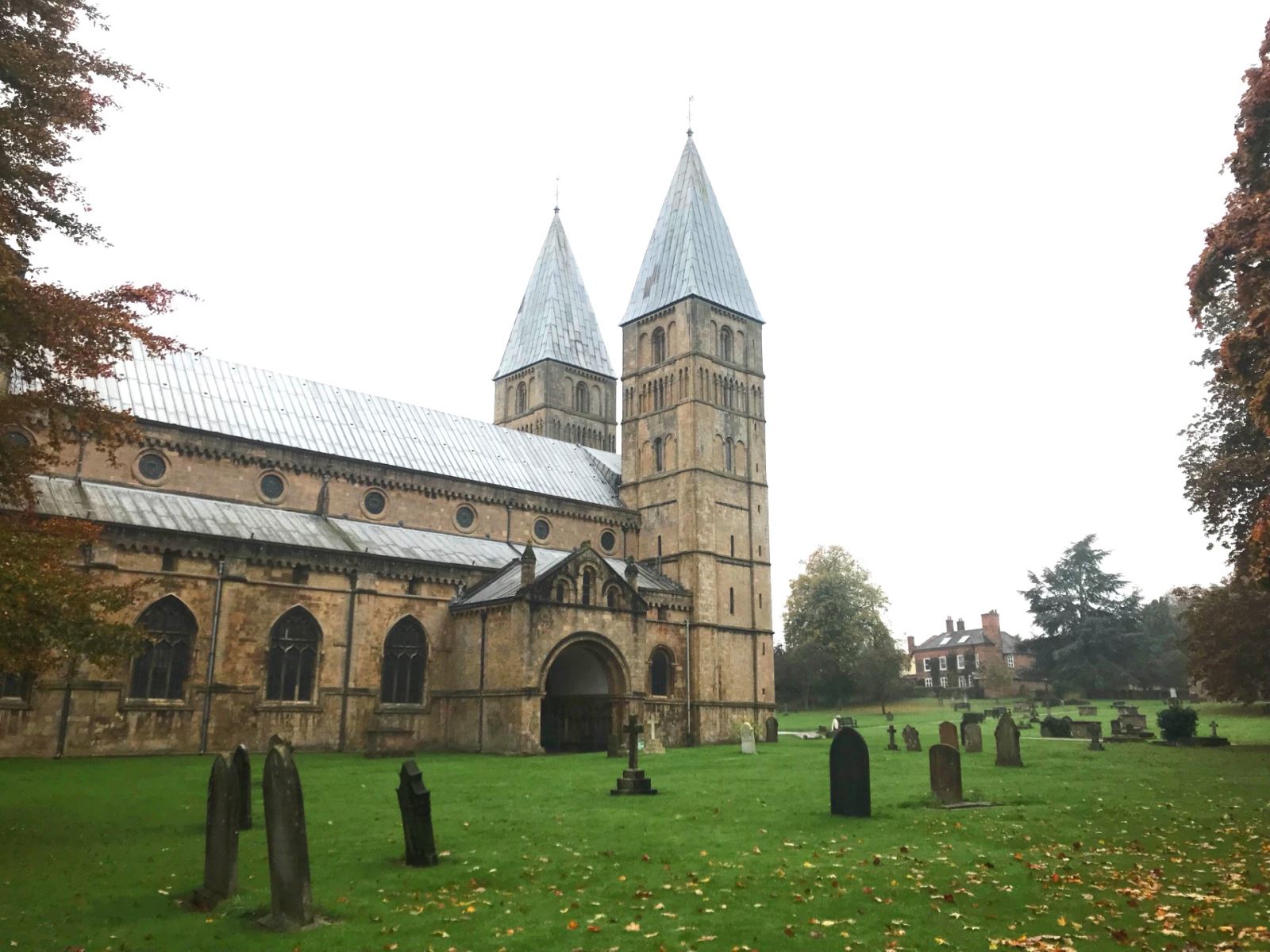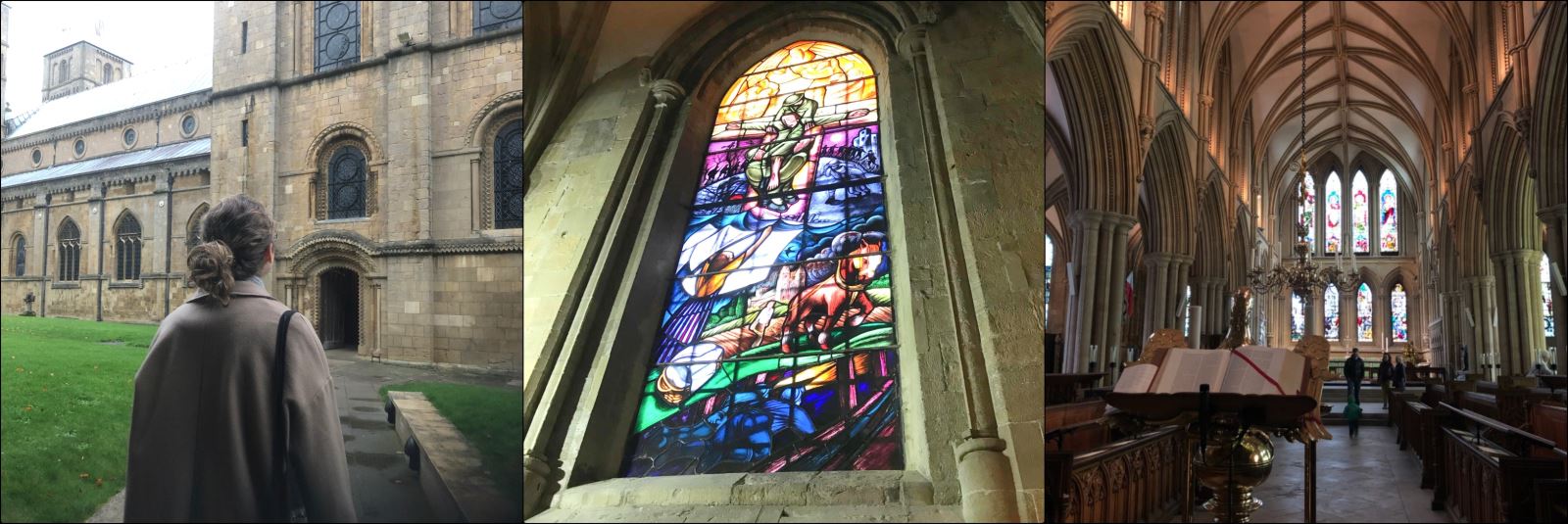
On a brisk autumn morning, I drove through the winding lanes out of Nottingham, the road lined by trees dusted in ambers, reds and yellows. The trusty satnav took me to Southwell minster, a 900-year-old statement building in the otherwise small Midlands village. I parked up and made my way towards the huge stone cathedral, through the gates and across the emerald grass. It was a quiet, bitter October morning and I found entering the main entrance through north porch almost like stepping backwards through time.
Built on the grounds of an old Saxon church, the site on which Southwell minster now stands was once a Roman villa. I was greeted by Kevin, a steward who had kindly offered me a tour of the minster and a glimpse of the many intriguing stories hiding in within. Our guide pointed at what looked like an old, sepia map on the wall before explaining that it wasn’t a map at all - in fact, it was the remains of plaster from the bath-house of the original villa. We continued through the minster, awestruck and almost always looking up and the intricate stonework of the roof and walls. To the west was the ‘Angel Window’, a meticulous piece of art installed in 1996 designed and painted by Patrick Reyntiens.
“But wait,” our guide whispered, “you must see the sanctuary windows.”
These windows dated back considerably earlier to 1528, originally intended for the Temple Church in Paris. The four windows were glowing softly in the autumn sun as I learnt that they had somehow survived destruction in the French Revolution and were later found in a Paris antique shop.

“And this,” Kevin told us, “Just this way is our newest window.”
Whilst this wasn’t the oldest or largest window, I found the Great War Memorial Window the most impressive of them all. Comissoned to mark the centenary of the First World War, it was designed in 2014 by Nicholas Mynheer and depicts various scenes in remembrance of the lives lost. We stopped and looked at it, silently, for a long moment.
We moved along to the Chapter House, past the current art exhibition in which tapestries by Jacqui Parkinson hang alongside the pews, with bright threads depicting interpretations of famous scenes from the bible. The Chapter House was down another corridor, past a set of small sculptures portraying Jesus carrying his cross, which visitors are invited to touch as well as view.
The most famous part of the Chapter House, and possibly the minster itself are the ornate leaves carved into the stone. The Leaves of Southwell are 13th century works famed after Sir Nicholas Pevsner wrote a book about them in 1945. Kevin tells us the stone leaves have been checked by a botanist and even give hints about historical climatic conditions, acting as a proxy record.
It was almost time to end the tour and step back into the 21st century. My guide offered me a handful of leaflets, all telling different stories about the minster and its long, eventful history. It is a hidden gem with many tales to tell, if you know where to look.
This was a guest blog written by Charlotte Evans for Visit Nottinghamshire.
Related
Comments
James N. Martinez Wednesday was a wonderful day that we spent at this amazing place with all our family members. It was great to meet the volunteers. Ornate leaves carved into the stone are one of the most famous aspects of the Chapter House and perhaps even of the cathedral itself. I will read https://speakerhub.com/skillcamp/eight-best-ways-grab-and-keep-your-audiences-attention-first-sentence article now which is sharing eight ways to grab the attention of the audience while presentation in class.

 to add an item to your Itinerary basket.
to add an item to your Itinerary basket.











